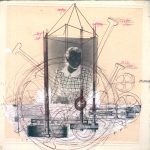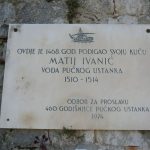Guest blog from Dagmar Meneghello, who was recently on Lokrum for Earth Week.
Charismatic Maximilian, emperor of Mexico, who was shot in 1867. only 35 years old, after three years of reign, is credited for the creation of Croatian and world’s most exotic parks.
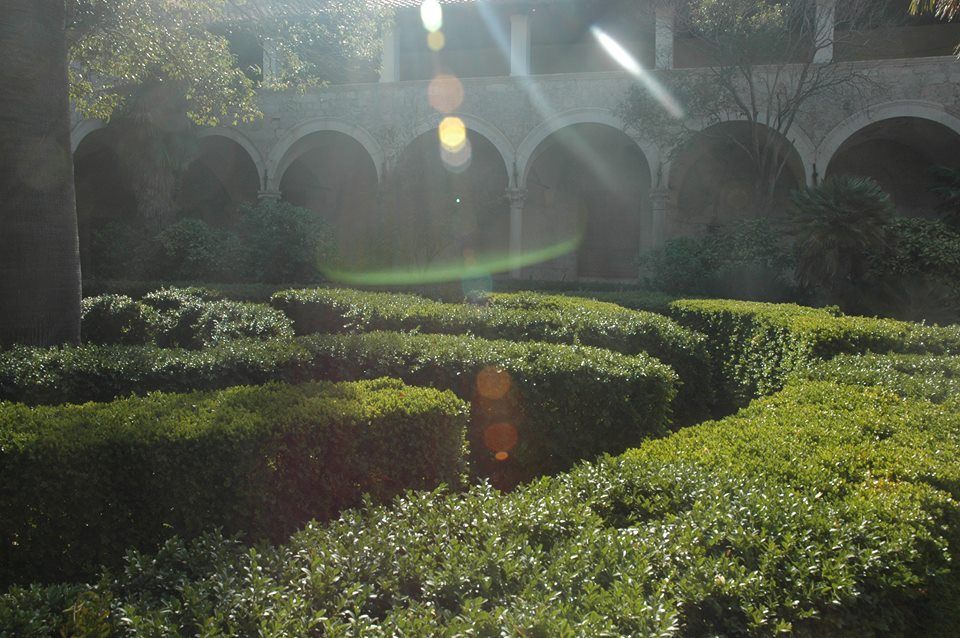
Il Castello di Miramare next to Trieste, the Island Lokrum with his exotic garden in front of Dubrovnik, Castillo De Chapultepec in Ciudad de Mexico, La Casa Borda and the Misterious La Casa Del Olvido in Cuernavaca in Mexico, Palmizana near Hvar are precious World Heritage. What we might have not known is- all these exotic magnific gardens were created by credit and by influence of the most charismatic figure of the world’s global historic scene, the archduke Maximilian of Habsburg. He was born in 1832 in the majestic castle of Schoenbrunn in Vienna. Unfortunately, he was born as the second son, as the younger brother of the future Emperor, Franz Joseph. Fate has destined him to a lead a life in shadow, though he was taller, handsomer, more attractive, and more fun than his kingly brother. Through the courts of the Austro-Hungarians they were whispering that in Maximilian there was French blood, perilous blood of Napoleon Bonaparte, that he in fact was the fruit of a forbidden love of the archduchess Sophia with the prince of Reichstadt- Napoleon II., the son of Napoleon Bonaparte and his second, Austrian wife Maria Louise, a cowardly egg in the great Habsburg monarchy. His supposed father, the male heir of Napoleon Bonaparte, was in exile in Vienna, born in 1811 and dead already in 1832. Hence, not even 21 years old. They said that he was ill, but who knows… Maybe he was poisoned, maybe killed, because Europe has still not recuperated from the bloody conquering of the French corporal, later a Tsar, his father. But castles keep their secrets. The possibility that a rival French blood was flowing through the veins of his younger brother disturbed Franz Joseph, who was not really an adored emperor, so he kept Maximilian as far as he could from the court in Vienna. He gave him titles and assignments and took them away without notice. Franz Joseph appointed him as governor in Italy and later Admiral of the Habsburg fleet so he could, on July 27th 1857, marry the single daughter of the Belgian king Leopold, Charlotte, who has not yet turned 17 years and was one of the wealthiest and prettiest princesses in Europe.
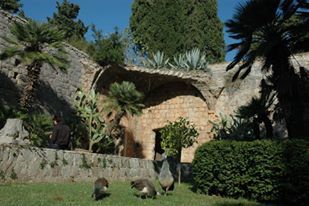
With her dowry, the groom, who was 25 years old, finish to built the castle of his dreams from white stone on a cliff near Trieste , surrounded by the sea and gave the name – Miramare. He planted there a lot of exotic trees and blosooms. However in these areas are strong bora wind and not enough warm in winter time, and the garden was not so magnificient as he liked.
1959. Maximilian as Austrian Admiral sailed to Dubrovnik. He came to give respects to the dead sailors who were killed by the explosion on the ship Triton. He saw Dubrovnik island Lokrum, sleep one night in this beauty and fell in love: magical Island, Mediterranean warm climate, magnificent old monastery, which is intended to convert to the palace.. He inserted all his enthusiasm in its decoration and the construction of the palace as well as the creation of the botanical garden.
Lokrum was for him a piece of territory that challenged him with its beauty of nature and depth of time: and besides that every island has the girth of an empire.

The Miramare is a work ”of a cultivated and decisive client, who was not just satisfied by foggy denotations, but entered into the details of the organization of ground plans, into the shaping of volumes, into the minutia of the equipment of interiors, and especially, who entered into the details of those architectural elements that had to suggest the character, ”status” of the object, his desired historical reminiscence”. (dr. Željka Čorak). The Miramar library is enormous, overfilled with rare books, travelogues, scientific papers, it was there that Maximilian spent most of his time. His spouse would paint and play music. There he would write his travelogues, his scientific annotations, his poetry and prose. His connection to the sea was most important above all. Maximilian took good care that the sea was visible from all the windows. The rooms in the castle were characterized by the sea: The Hall of the Roses of Wind, The Hall of Seagulls. His ”naval” working room, his bedroom, were all shaped like cabins on a frigate.
“Such a transposal of space from a ‘floating’ into a ‘static’ context stems from an exceeding faith in the power of metaphor. It is sufficient to say ‘like’ so that something is ‘indeed’. Maximilian’s whim can be compared to, in harmless continuity, Marie Antoinette’s village, but he still pushes the limit of play and comes to the verge where the convention of reality starts to sway. The other fact that needs to be noted is that no authentic glass in the castle Miramar is white, it does not let natural light through. All of them have a slight breath of yellow or even purple color- the color of dawn or dusk. That again is a deviation of the realistic convention of time passing. Not only that one can choose and stop space but one can also choose and stop time
Dawn and dusk, however, are moments of that dubious relationship between lightness and darkness, when one does not know in which direction it will go. These favored moments of fantasy, they are in a symbolic resistance to the natural laws at the castle Miramare, enjoying their whole-day reign.”
Lokrum was for him love, freedom, and the dream home.
In the cool shade of palms, bougainvilleas and giant fern, as well as an enormous number of other trees and plants…Birds always singing, the local and inhabited ones. Hummingbirds, nightingales, peacocks, pheasants… numerous fountains, ponds, groves… And everywhere – where the eye can see – the offing of endless blue sea
The Vatican and the French offer Maximilian Mexican crown, and he and his wife have accepted it with enthusiasm. They gone in an unknown country in which the war was fought and started the Mexican Revolution. Helped by American soldiers Mexicans won and Maksimilijan was shot..

He himself remained a big mystery. Smart, virtuous in estimates, subtle- and then- the decision to leave for Mexico. Was he that desperate- a pompous ostrich with its head in the sand over which there was the thudding of guns?
When he saw that his Mexican adventure was turning into a fatal farce, he could have abdicated, he could have run away or sail away on his frigate Novara alive and well. Live luxuriously as an ex-emperor, of which there were quite a few at that time ”but he decided just when he was arriving to Veracruz, to return. In his mind, in his own heart Maximilian of Habsburg was a brave knight, the Emperor of Mexico,” wrote the novelist Sara Jorge Stephenson who at that time lived in Mexico.
Was he just listening to his wife and mother’s stories of honor and duty? Or did he himself create history, that one thing that would remain long after he is gone, the same way as when he painstakingly built the Miramare for future visitors, who would based on what they see judge the one who left it for them.
“Yo soy Mexicano” – I am Mexican. “Mexicans, may my blood be the last to be spilled for the welfare of the country; and if it should be necessary that its sons should still shed theirs, may it flow for its good, but never by treason. Long live independence! Long live Mexico!” – “Que me sangre sea la ultima que se derrame en sacrificio a la patria;y si fuese necessario algunos de sus hijos, sea para el bien de la nacion, y nunca en traicion de ella.” There are also other versions of his last words before the shooting, but these have been said immediately after that tragic event by the Mexican dr. Reyes, who witnessed the execution so they seem most plausible. In that morning, so long, long ago, on the day of his death, in front of 3000 soldiers, a young emperor uttered his last proud words of love for the country he never understood and which rejected him.
The construction of the palace on Lokrum is stopping, failed big plans. Today ruins. Only the garden under the warm Mediterranean sun grew and flourished.

Lokrum has all the ingredients to become a world Mecca. A charismatic figure like the Mexican emperor, a beautiful castle, an overgrown park and- its curse.
The legend of the curse of the Benedictines enunciated by the monks when they were displaced from their island for all the future owners and pleasure seekers of this divine scenery, the arrival of the ones with good or bad karma, real gifts or the Danaos’ ones, was terrible.
“Let anyone be cursed whosoever disembarks on Lokrum for his own pleasure.”
Because of an order of a French general, the members of the aristocratic family Gozza, Pozza and Sorgo had to close down the Benedictine monastery on Lokrum, which was there since 1023 and chased away the Benedictines and forbid them to ever return. The monks heard the order, served their last mass at the church of Saint Mary, began a night procession with burning candles that they turned toward the ground. The wax dripped onto the ground whilst they repeated their horrible curse walking around the interior of the island.
Legend has it that their curse soon came to fruition. One of the three Dubrovnik aristocrats jumped out of the window, the other disappeared in the sea while the third was murdered at the hand of his servant. Captain Tomašević became the owner of Lokrum but soon he went bankrupt and sold the island to an enthusiast and dreamer, the archduke Maximilian, who saw his second home there…
After his death , Lokrum was offered on the market but for a long time there were no interested buyers. The new buyer, the count of Polis, Dujmović from Poljica, quickly succumbed to a complete financial ruin. And so it went until the unfortunate Rudolph, the only son of king Franz Joseph, who spent romantic evenings with his wife Stephanie, enjoying its beauty but his heart was drawn towards the gorgeous Maria Večera. Soon the world was shocked by the sensational news of the suicide of the two lovers in Mayerling, a tragedy that has never been completely unveiled.
It is said that the Queen Elizabeth, the popular Sissi, hearing of the curse, was intent on returning the island back to the Benedictines. She came to Lokrum when she was returning from Corfu. The Benedictines rejected her offer. As she was keen not to lose any more family members, she lost two already, she gave it to the city of Dubrovnik under the condition that anyone of the Austrian royal family could get it returned once they desired it.
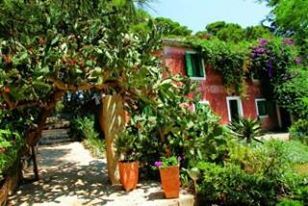
Elizabeth, the princess of Windischgratz, wanted it. Both the Elizabeth had the same unfortunate fate. Sissi was killed accidentally by the Italian anarchist Luigi Luccheni , the princess Windischgratz shot at a dancer, the lover of her husband in a nightclub in Prague. The Habsburgs lost their throne after 700 years.
And so on, we could account numerous stories that happened on and around Lokrum. Tragic love stories, fatal events among the servants, unexplained disappearances- it all completed the mystery of this island, which always anew kept attracting with its specificity and beauty. A curse even stronger than the- Pharaon’s. Dr. Marko Margaritoni wrote of the Lokrum and Dubrovnik secrets in his interesting book ”Dubrovnik- between history and legend”.
Maximilian brought another park to Croatia, that- although scientifically disorderly, because of its particularity, grandeur and beauty became a big Mecca for global nomads: the Palmižana garden of the Meneghello family on Saint Clement, the largest islet of the Hvar archipelago. Foreigners dub it among the prettiest of the World.
The idea of its creation was born on Lokrum in Maximilian’s park, its planting began over more than a hundred years ago. The old owners, the family Meneghello, began to green the rocky ground of their property with plantations of rosemary, olives, grapes and aromatics around 1800. But it was not until their heir, botanist Eugen Meneghello, born in 1876, who served in Dubrovnik, skillfully designed a park on the large property of more than three million square meters. Those were expert drawings, as it is suitable for a professor of project design and a professor of natural science, a lover of botany.
The site around the ”Palmižana castle”, in fact a simple one-story, elegant, stone-clad with purple mortar family summerhouse, built somewhere before 1820, was meant to be an exotic garden with flowers, cactuses, succulents, palms. On the more fertile parts it was intended to serve for the cultivation of grapevine, olives while the fields, meadows and sunnier parts served for lavender and aromatics. In love with Maximilian’s garden Eugen Meneghello / as a young professor of botany started , a huge work and sacrifice – and done it. His students brought to him rare plants from all over the world , he imported exotic plants from Padova , the oldest botanical garden in the Europa…
In 1906 the professor started to plant one new, in these parts an unknown plant, tourism. He had an enormous wish for many other people to enjoy these spectacular gardens. “From the foundation of his guesthouse he kept a Book of Guests from which it is clear that from the beginning Palmižana enjoyed the visit of very demanding travelers, mostly well-educated globetrotters, for whom it was not difficult to recognize that the countryside on Palmižana was not a fight against nature but a balance with it, that long walks with the professor were not calisthenics but real botanical actions, that fishing was the return to a lost civilization of ancient Greece and that hunting grey partridges and pheasants was conducted by Meneghello in the exact fashion as the chivalry from the middle ages…” (Slobodan Properov Novak)
A rifle enclosed in silver, like the sword, the family inherited from their ancestor Pierre Jerome Gaugiran, a pharmacist of Napoleon Bonaparte, who came to Hvar in 1807 and stayed there, and who passed upon the Meneghelllo family the until then unkown art of fractional distillation, so they soon opened a factory refining aromatic plants…
In 1859 the Habsburg archduke probably sailed along the Adriatic and used the calm bays of the Paklinski archipelago and dropped anchor there. Although the edifice Palmižana Castle was charted on the maps of the Austrian Lloyd, which were inscribed by Guiseppe Rieger in 1851, Maximilian probably did not know that at the same time on that island one Hvar-Venetian family produced more than half of the needs for aromatic plans and herbal essences for the Habsburg Empire.
On August 20th 1838 a ship connection was established between Trieste and Kotor. The largest shipping company employed an artist from Trieste to chart all ports and harbours, islands and the coast for the needs of the passengers- so the ” Panorama della costa e delle isole di Dalmazia nei viaggi dei piroscafi del Lloyd Austriaco Trieste 1850.” was created, which, although it was a small folded over booklet, when opened was ten meters long.
At that time the Meneghello family was wealthy, owners of a factory of aromatic plants that was the oldest and largest in south Europe on Saint Clement, ”Quintessenza”, the first pharmacy on Hvar, olive groves and numerous possessions all over the island of Hvar- they were the sole heirs of the Bervaldi family and two thirds of the Saint Clement island. They raised their children in Dubrovnik and Hvar, educated them in Vienna and Padova as professors, notaries and pharmacists… Imbued by all the good ideas of the XIX century and strong cultural centers from around, professor Eugen wanted to repeat Maximilian’s garden on his estate. Palmižana began to flourishing, blossoming…
His dreams were bluntly interrupted. In 1947 the Communist rule seized most of his estate, petty, communist, new local power-lords destroyed the arduously raised garden on an islet without water. As a member of a family who worked and inherited this estate for centuries, as a follower of tradition, he was considered an enemy of the totalitarian regime, he was chased into death, hung…
His and his family’s cultural and scientific work, with which they indebted their community, were thrown into oblivion- everything remained solely in the hearts of his successors. They, although depleted, with continuous efforts try to regain their property, rescue the little that was left, enrich and preserve this high-grade garden. In constant fear, under constant siege. Charisma, tragedy, the Palmižana garden of memories and the garden of oblivion. Magical gardens of buried hopes and always newly awoken aspirations, garden of love.
His namesake grandson Eugen Toto makes a great new part of arboretum – Toto’s, full of different kinds of palm trees and other new exotic plants. Because of this , just several times, and this year too, was declared a Saint Clement, Palmizana for the most beautiful Adriatic island, and the second for the beauty in Europe, after the Greek island Amorgos / Huffington Post/.
Our story of two manificient gardens and two big enthusiasts of Mediterranean and exotic vegetation, both passionate botanists, both followers of a tradition and both of a tragic end- chased into death, murdered- is a longing gasp to revitalize their work in our region.
”Maybe one day they will institute how the impulses of remembering and forgetting rhythmically equate history. In this game of antithesis and thesis the nineteenth century is a realistic victim of the twentieth century. Because the only thing that the 20th century worked on with its full effort and all its willpower was to forget. The forgetting of former systems of sacraments, former meanings, former values.”
Many names of founding gardeners in Croatia have been imprinted into the wind as they disappeared as their gardens. Sometimes their souls blink at night like a silent whirr of a bat’s wing. But that happens less and less. Today, in the XXI century we turn our sight only forward. And those bats, since they can only survive in an unpolluted environment, are less and less. The soul of the deceased professor Eugen Meneghello wanders around the Palmižana garden. Does the professor’s soul wander calm and at peace because the garden has survived, blossomed, grew bigger under the care of his descendants. Or is it unhappy and in panic what will happen to his closest that followed him in love and what life they will lead and what end will they have in this time we living..
Regarding Earth Day in Dubrovnik is being held event “ 7 days of Lokrum” with numerous sponsorships of those who love him. In program participated Dagmar Meneghello, “custodian” of Palmižana tradition.


